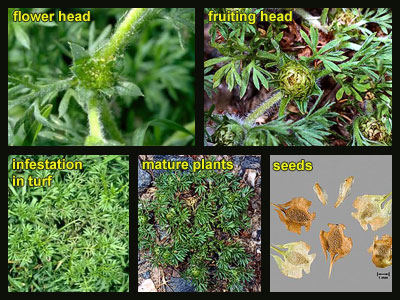From the Vine – Lawn Burweed
go.ncsu.edu/readext?919652
en Español / em Português
El inglés es el idioma de control de esta página. En la medida en que haya algún conflicto entre la traducción al inglés y la traducción, el inglés prevalece.
Al hacer clic en el enlace de traducción se activa un servicio de traducción gratuito para convertir la página al español. Al igual que con cualquier traducción por Internet, la conversión no es sensible al contexto y puede que no traduzca el texto en su significado original. NC State Extension no garantiza la exactitud del texto traducido. Por favor, tenga en cuenta que algunas aplicaciones y/o servicios pueden no funcionar como se espera cuando se traducen.
Português
Inglês é o idioma de controle desta página. Na medida que haja algum conflito entre o texto original em Inglês e a tradução, o Inglês prevalece.
Ao clicar no link de tradução, um serviço gratuito de tradução será ativado para converter a página para o Português. Como em qualquer tradução pela internet, a conversão não é sensivel ao contexto e pode não ocorrer a tradução para o significado orginal. O serviço de Extensão da Carolina do Norte (NC State Extension) não garante a exatidão do texto traduzido. Por favor, observe que algumas funções ou serviços podem não funcionar como esperado após a tradução.
English
English is the controlling language of this page. To the extent there is any conflict between the English text and the translation, English controls.
Clicking on the translation link activates a free translation service to convert the page to Spanish. As with any Internet translation, the conversion is not context-sensitive and may not translate the text to its original meaning. NC State Extension does not guarantee the accuracy of the translated text. Please note that some applications and/or services may not function as expected when translated.
Collapse ▲The biggest pain in the foot that you may have this summer will probably come from lawn burweed. If you have ever walked through a patch of these barefoot, then you know the pain that I’m talking about. Not only does it affect us, but also our pets and any other wildlife that walks through the area. Lawn burweed is a winter annual that germinates in the fall of the year as the soil temperatures drop below 70 degrees. It remains small and inconspicuous during the winter months and begins to rapidly grow in the spring. During this rapid growth period, the weed forms spine tipped burs in the leaf axils that covers and protects the seeds of the plant. The best way to manage lawn burweed is to maintain a healthy, dense lawn by fertilizing and liming according to soil test results and mowing at the proper height and frequency for your specific grass species. This is much easier said than done, considering the different soil types and climate conditions found in North Carolina. The best management strategy can be summed up by a famous Barney Fife quote, “Nip it in the Bud”, or with the old saying, “an ounce of prevention is worth a pound of cure”. A pre-emergence spray program in September through November can prevent many of these weeds from growing and kill them before forming spines. Products containing Isoxaben can be used on all species of grass, and atrazine can be used on Centipede and St. Augustine. Two applications are recommended, one applied in September for early germination, and one in November for late germinating weeds.
During the late winter and early spring (Feb, March, April, and May) you should manage lawn burweed with a post-emergence spray program. Herbicides with the active ingredient 2,4-D, MCPP+ Dicamba (also known as 3-ways) can be used on all warm season grass species. Use the lower recommended rates when applying these products to Centipede and St. Augustine as these two grasses can be sensitive to 2,4-D. Metsulfuron (MSM Turf) can be applied at recommended rates to all species of grass. This product is safe for all warm season grass species. If you are using either of these two products, make sure that it is after your grass has greened up and is actively growing. Celsius, which is a 4-way product, is also safe for use on all species of warm season grasses and can be applied during the spring green-up period.
If you’d like more information on lawn burweed, Clemson University has a great publication.




